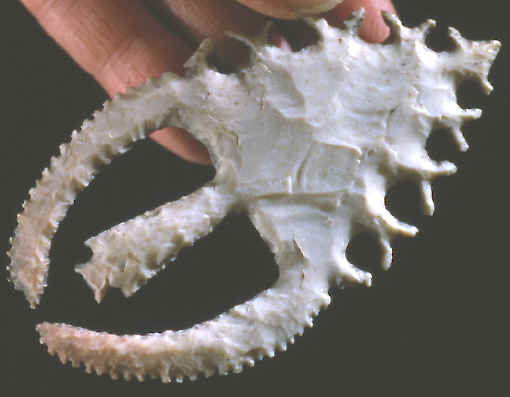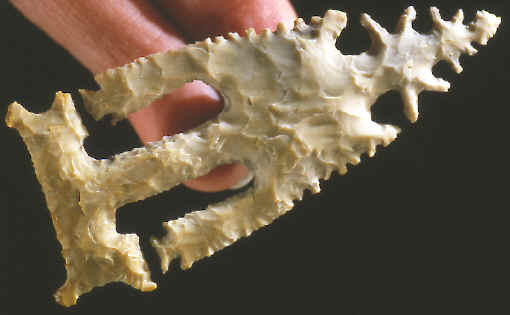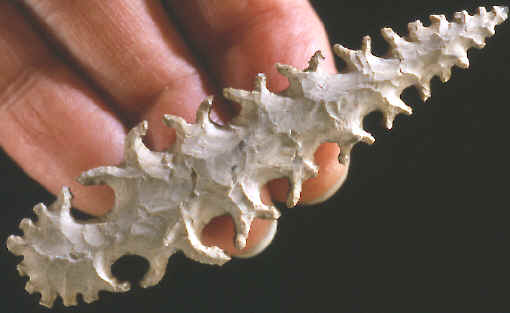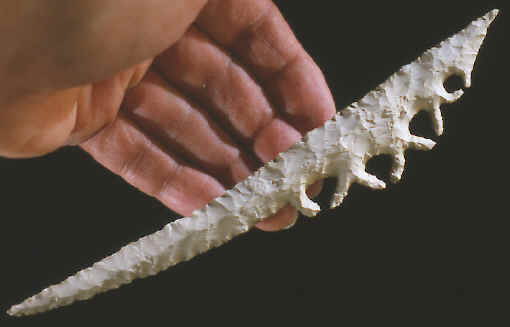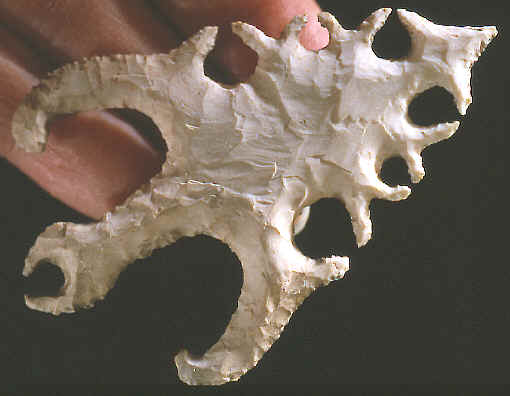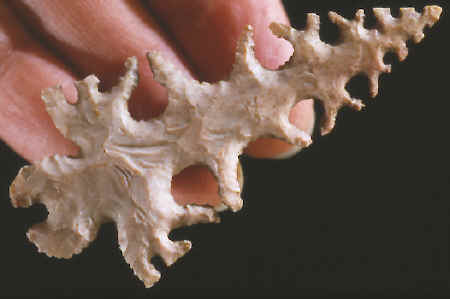|
|
|
The cache of strange looking eccentrics that Mack Tussinger "found" change his life and his family's too. As the early accounts go, "with depression upon them" and "the wolf growling at the door" he began selling the smaller eccentrics to the family doctor, Dr. W.C. Bernard. It took "a full days trip both ways, using a little of the night" by horse and buggy to travel the 17 miles to Seneca where the doctor Lived. |
|
|
Mack sold hundreds of eccentrics to Dr. Bernard over a period of several years. Mack and his wife Sue were able to move into a better home and in fact "they moved several times, bettering themselves each time." Mr. Tussinger claimed to have sold some of the larger eccentrics for $100. to $150. to John Maff of Newark, New Jersey. That was a lot of money back then. |
|
|
|
|
It's difficult to say exactly how many eccentrics were sold by Mack Tussinger. In 1960 Willard L. Elsing is credited with owning the "largest known private collection" of the eccentrics which numbered 800. Half of these were donated to the Oral Roberts University to the Elsing Museum. The museum was named after Mr. Elsing who also gave his life's work of collected materials of minerals, gems, Native American artifacts and oriental sculptures. The other half of his Oklahoma eccentrics collection was recently sold by another institution that also received them as a gift from Mr. Elsing. All examples illustrated in this article were once a part of that collection. |
|
|
|
|
Claude Stone, who later became a Judge, writes in 1948 that there were 3,500 eccentric flints found in the Rhoades Mound of Delaware County, Oklahoma, in 1921. They have turned up in many different collections over the years. Mack said that when he discovered the original cache in 1921 he dug them out of the mound and reburied them in his back yard. He says he made "his own private mound." Over the years, each time Mack moved he also "moved his secret mound to another back yard." The problem with the original excavation is that Mack Tussinger is the only person to have witnessed any eccentrics excavated from Rhoades Mound. No scientific excavation of the mound ever produced any eccentrics. |
|
|
|
|
In the booklet titled "Treasures From A Pre-Historic Age", Willard L. Elsing is quoted as saying that he "believes the possibility that Easter Island was the highest point of the Lost Continent of Mu." In this same book the eccentrics from Oklahoma are compared to some of the figures from the wooden tablets from Easter Island. Irene Herringa writes "This pre-historic art in flint, in Mr. Elsing's opinion, will eventually prove to be one of the greatest archaeological discoveries of the ancient world, as brought to light in this atomic era." |
|
|
Over the years, there have been many people involved with the Oklahoma eccentrics who were highly skilled professionals in their different fields of work. There were archaeologists, court Judges, medical Doctors, museum curators and others. Some of these people believed that Mack Tussinger's eccentrics would somehow redefine the past archaeological record in a way that would shake it to its very foundation. |
|
| CONTINUE ON TO PAGE THREE | |
|
"REFERENCES"
1940,
"Study of the Oklahoma Eccentric Flints", by H. Holmes Ellis, 7
pages. |
|
